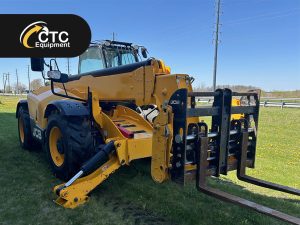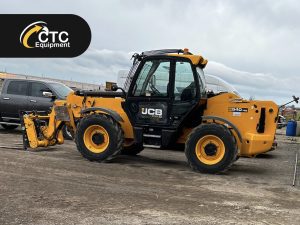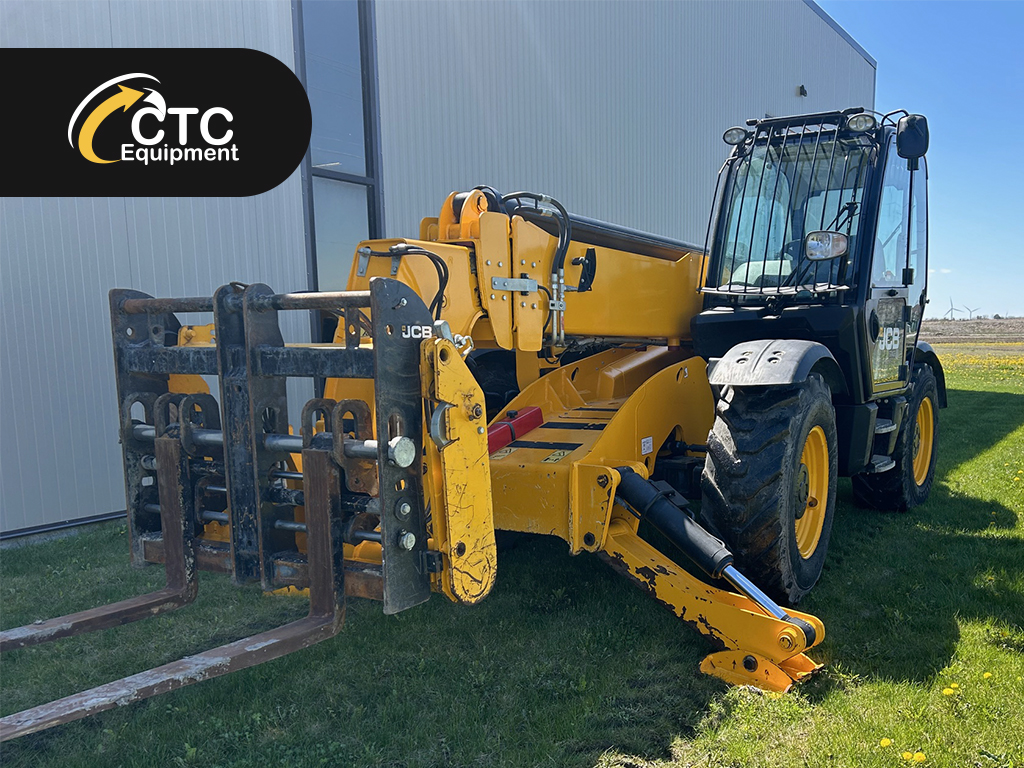The JCB 540–140 Telehandler: A Versatile Solution for Various Industries
The JCB 540–140 telehandler stands as a beacon of innovation and efficiency in the realm of material handling equipment. With its robust design, impressive capabilities, and advanced features, this machine offers a multitude of benefits across diverse industries. This comprehensive exploration will delve into the specifications and unique features of the JCB 540–140 telehandler, shedding light on its versatility, performance, safety features, and applications in modern workplaces.
Specifications of the JCB 540-140 Telehandler:
The JCB 540–140 telehandler boasts impressive specifications that set it apart as a leader in its class. With a maximum lift capacity of 9,000 lbs (4,082 kg) and a maximum lift height of 44 feet (13.4 meters), this machine is capable of handling heavy loads and reaching elevated areas with ease. Its forward reach extends up to 31 feet (9.5 meters), providing ample reach for various tasks. Powered by a robust JCB Diesel by Kohler engine, the 540–140 telehandler delivers reliable performance and fuel efficiency, ensuring optimal productivity on the job.

Screenshot
Versatility:
One of the standout features of the JCB 540–140 telehandler is its versatility. Equipped with a range of attachments, including forks, buckets, and lifting hooks, this machine can adapt to a wide range of applications. Whether it’s loading/unloading materials, stacking pallets, or lifting heavy equipment, the 540–140 telehandler excels at handling diverse tasks with precision and efficiency. Its telescopic boom provides enhanced reach and manoeuvrability, allowing operators to access confined spaces and elevated areas with ease.
Performance:
The JCB 540–140 telehandler is engineered for optimal performance in demanding environments. Its advanced hydraulic system ensures smooth and precise operation, allowing for seamless lifting, lowering, and tilting of loads. With multiple steering modes, including two-wheel steer, four-wheel steer, and crab steer, operators can navigate tight spaces and maneuver with confidence. Additionally, the machine’s spacious cab offers excellent visibility and ergonomic controls, enhancing operator comfort and productivity during long shifts.
 Safety Features:
Safety Features:
Safety is a top priority in the design of the JCB 540–140 telehandler. Equipped with features such as a load management system, overload protection, and automatic stabilizers, this machine ensures safe and stable operation in all conditions. The cab is equipped with ROPS/FOPS (Roll Over Protective Structure/Falling Object Protective Structure) certification, providing added protection for operators in the event of a rollover or falling objects. Furthermore, the machine’s intuitive controls and anti-slip surfaces enhance operator safety and reduce the risk of accidents on the job site.
Applications:
The JCB 540–140 telehandler finds applications across a wide range of industries, including construction, agriculture, warehousing, and manufacturing. On construction sites, it can be used for lifting and placing materials, installing structural components, and performing maintenance tasks at height. In agriculture, it is ideal for handling bales, loading/unloading equipment, and transporting supplies across farmsteads. In warehouses and distribution centers, it facilitates efficient pallet handling, stock replenishment, and order picking operations. With its versatility and performance, the 540–140 telehandler is a valuable asset in any workplace requiring reliable material handling solutions.
The JCB 540–140 telehandler is a versatile and reliable machine that offers impressive capabilities across various industries. With its robust design, advanced features, and superior performance, it excels at handling a wide range of tasks with precision and efficiency. From construction sites to agricultural fields and beyond, the 540–140 telehandler continues to set the standard for excellence in material handling equipment, providing operators with the tools they need to succeed in their respective industries.


Share This Article
Choose Your Platform: Facebook Twitter Google Plus Linkedin